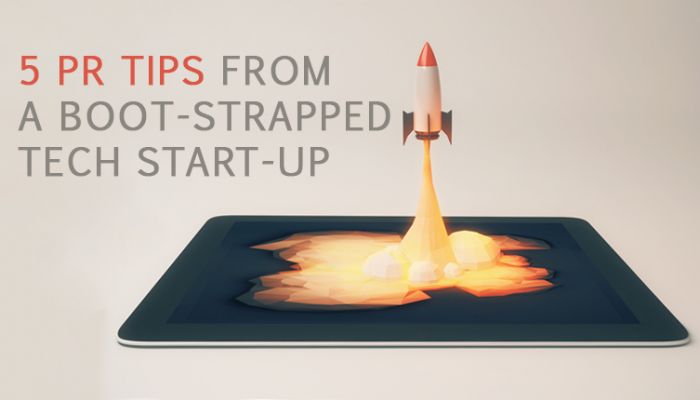5 PR Tips From A Boot-Strapped Tech Start-Up
This is a guest post from Heshaam Hague, a content marketer at UK cleaning price comparison website, Service Octopus. Heshaam has held both client-side and agency roles, leading content strategy for a wide range of clients.
As many entrepreneurs will know, starting a company from scratch isn’t easy. Creating the right brand, carving out your niche and attracting a customer base can all take time, time that new companies can often ill-afford. What’s more, according to recent research, London is the toughest place in the country to make a go of it with just 50% of companies founded in 2013 still going in 2016.
As a boot-strapped tech start-up ourselves, we’ve had to learn this lesson the hard way. To help others beat the odds and come out on top, we thought we’d share a few of the most important things we’ve learned over the years in terms of building a brand and generating PR.
1. Know Your Audience
Knowing your audience is essential if you’re going to create the right brand identity and send the right message. The more you can find out about your customers’ interests, likes and dislikes, the easier it will be for your brand to create a narrative that will resonate with your audience.
The easiest and most affordable way to do this is to use your own company data to inform your ‘customer personas’. This information is already right there at your fingertips, making it an invaluable resource for your early PR planning.
Customer personas are fictional, generalised representations of your target audience. Customer personas have helped us enormously when it’s come to tailoring our press materials and even creating newsletters and blogs posts.
There are a number of ways you can collect the data required for these personas. Sending your customer base a survey is one of the most efficient ways. Data capture when signing up to an account with your company is another. Interviews with some of your core customers will provide you with a wealth of knowledge and is something that the big corporations will actively do.
2. Engage With Influencers
If you’re still unfamiliar with the world of influencers, now’s the time to start swatting up. They’re the tour de force of the digital marketing age and hold great power across a range of media platforms including blogs, YouTube, Instagram and Facebook. Engaging with influencers that are relevant to your industry can be a great way to get your brand noticed. Recent research has shown that 63% of millennials would try a brand or product based on the recommendation of an influencer, so fostering this relationship is well worth the effort.
US retail chain Target recently ran a successful campaign in conjunction with three teen influencers. The brand had created a line of clothing that was designed by kids for kids. Their young brand ambassadors mentioned the products on their social media channels and the campaign reached a whopping 2.63 million people within the first two weeks.
3. Go Niche
Target smaller, niche publications and influencers that are closely related to your industry. As well as being a good way to network with relevant on and off line publications, this strategy can help to improve the SEO of your site as simply being cited in these areas will, over time, help the likes of Google to recognise you as an authority in the field. Smaller publications aren’t pitched to as much as large national magazines and international sites. This means they’re not inundated with content and your piece should have a better chance of being picked up.
4. Publish On Alternative Platforms
Publishing content on platforms like LinkedIn Pulse and Medium is a good way to increase traffic to your site from a completely new source. It alleviates the issue of simply relying on your blog for branded stories. The sort of people that are reading content on these platforms may not be the same sort of people who would necessarily read your blog. Publishing on LinkedIn Pulse and Medium therefore opens your content up to a whole new audience. What’s more, publishing your content in less traditional places will help to increase your visibility, both within the platform and on the wider web.
The ‘organic reach’ of LinkedIn is very impressive with content published on the site generally reaching around 20% of your network. This is compared to 10% for Twitter and just 2.6% on Facebook. One of the best things about Medium is its Import Tool which allows you to import content from anywhere else on the web. This makes it incredibly easy to syndicate your articles and get new life from existing content. Make full use of these resources and you should be able to grab the attention of a new, socially engaged audience.
5. Use Relevant Resources
PR media databases, such as Vuelio, can save you a lot of time and hassle by providing you with instant access to thousands of journalists, editors and influencers. The database is continuously updated which ensures that emails are always delivered to the right place/person. This saves you from having to update all of your contacts, which would otherwise be an awful lot of admin!
There is also an array of distribution options too, i.e. email and newswires, which gives you the flexibility in terms of how you reach your targets. It also saves you time – rather than exporting multiple lists and emailing them individually, you can send distributions from the actual tool.
Incorporating these ideas into your PR plan could help you to get the attention your company needs to succeed. Once you’ve done that, it’s up to you to continue to provide an excellent service if you’re going to maintain the reputation your hard-working PR team has helped to build.



Leave a Comment